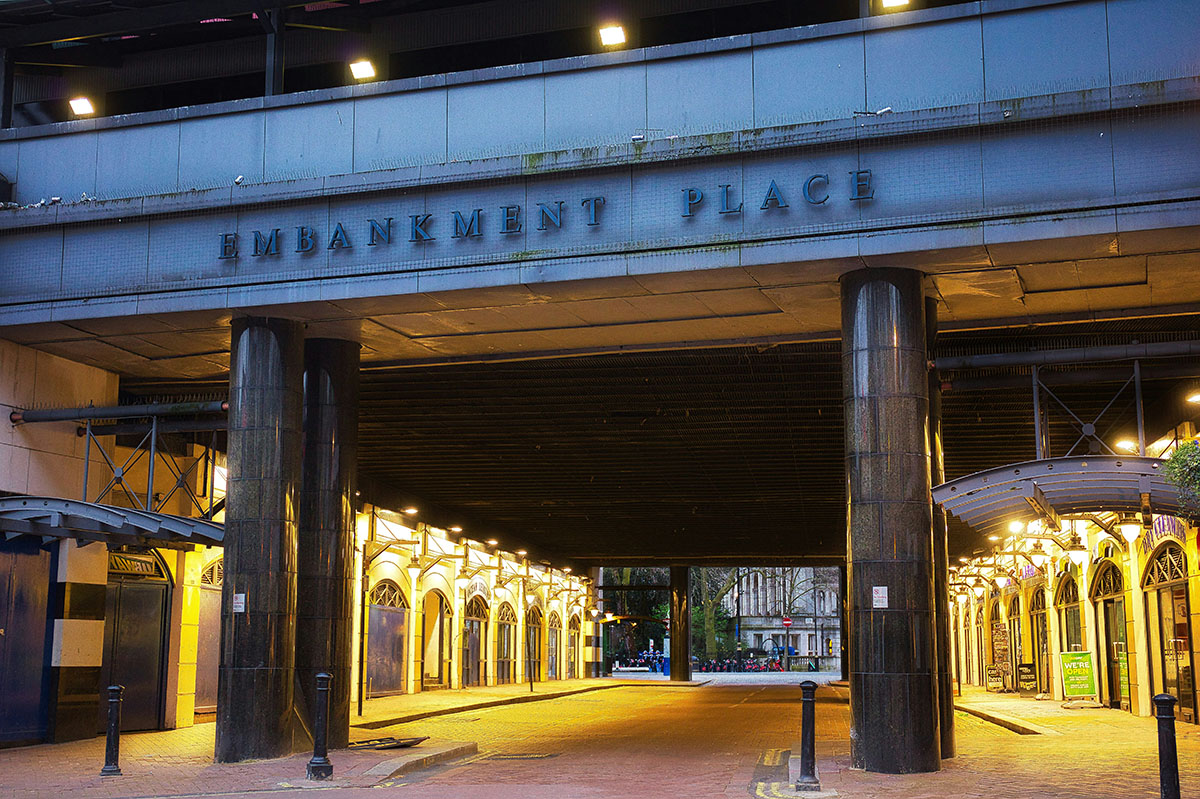Swift Office Cleaning services on The Thames Embankment provides its customers measurable high standards and quality, delivered by experienced and passionate professionals, we provide excellent value for money. We also offer complete flexibility; carrying out office cleaning services in the morning, evening or at a time that best suits your staff, operations and your business overall. This is what makes us the natural choice for businesses searching for reliable and expert office cleaning services in and around Embankment and neighboring central London.
A little background about The Thames Embankment…
The Thames Embankment is a work of 19th-century civil engineering that reclaimed marshland next to the River Thames in central London. It consists of the Victoria Embankment and Chelsea Embankment.
Embankment stretches from Battersea Bridge in the west, and includes Cheyne Walk, Chelsea Embankment, Grosvenor Road, Millbank and Victoria Tower Gardens.
Sir Joseph Bazalgette and the Thames Embankment plan
Development of the Victoria Embankment began in 1862. It starting at Millbank on the main, north (or “left” bank) was primarily designed by Sir Joseph Bazalgette with the architectural work on the embankment wall and river stairs designed by Charles Henry Driver.
The Embankment development included the main low level interceptor sewer, serving west London’s growth, and an underground railway (Circle and District Line) over which a wide road and riverside walkway were built. The development was shored up by a heavy retaining wall along the tidal River Thames.
In total, Bazalgette’s scheme reclaimed 22 acres of land from the River Thames. It prevented localised flooding, such as around what had been the remnants of Thorney Island, much of which was owned by the Duke of Westminster. Waterfront hotels, supply warehouses and genteel “town houses” which had enjoyed boat access by water-gated inlets and lost this.
Thames Embankment History
There had been a long history of failed proposals to embank the Thames in central London. Embankments along the Thames were first proposed by Christopher Wren in the 1660s, then in 1824 former soldier and aide to George IV, Sir Frederick Trench suggested an embankment known as ‘Trench’s Terrace’ from Blackfriars to Charing Cross. Trench brought a bill to Parliament which was blocked by river interests.
In the 1830s, the painter John Martin promoted a version, as realised later, to contain an intercepting sewer. In January 1842 the City Corporation backed a plan designed by James Walker but which was dropped due to government infighting. The government itself built the Chelsea Embankment in 1854 from Chelsea Hospital to Millbank.
Some parts of the Embankment were rebuilt in the 20th century due to wartime bomb damage or natural disasters such as the 1928 Thames flood. The Thames and Albert embankments are but a fraction of the 200 miles of walls that prevent the Thames from flooding adjoining lands, and which were begun in the Middle Ages. Much of the granite used in the projects was brought from Lamorna Cove in Cornwall. The quarried stone was shaped into blocks on site before being loaded on to barges and transported up the English Channel into the Thames.
Victoria Embankment
Beyond the Houses of Parliament, it is named Victoria Embankment as it stretches to Blackfriars Bridge; this stretch incorporates part of the shared District/Circle line, a bi-directional tunnel of the London Underground and passes Shell Mex House and the Savoy Hotel.
It likewise incorporates gardens and open space, here at their greatest, and collectively known as the Embankment Gardens, which provide a peaceful oasis in the heart of Central London. The gardens include many statues, including a memorial with a bust of Bazalgette himself.
Albert Embankment
The smaller and shorter Albert Embankment is on the south side of the river, opposite the Millbank section of the Thames Embankment. It was created by Bazalgette for the Metropolitan Board of Works and built by William Webster between July 1866 and November 1869.
Contact us today if you’re looking to make a difference in the cleanliness of your office environment or increase the frequency of your office cleaning, with a reputable daily office cleaning firm, with 40 years’ commercial experience
Call us today on 0203 405 8442 or fill out the quotation form on this website, to receive your free quotation.

Photo by Jules D Truman on Unsplash
For your Office cleaning needs. Here’s what you need to know and what you need to do…
- Daily Office Cleaning on Thames Embankment that works?
Swift Cleaning provides a reliable, high-quality office cleaning service that’s tailored to your needs - Fill in our online quote form
Tell us about your premise type, purpose and size, and we’ll give you a quote - We’ll give you a call
If we need more information from you, then we will get straight back to you. We’ll give you a call to discuss your needs and answer any questions you have - We’ll setup and manage your cleaning schedule
Things change! Sometimes we need to adjust. Knowing your needs at the outset could allow you to reschedule, defer or add extra cleans due to special events or peak days or seasons - Account management
Dedicated account and supervisory management ensures you can be confident in the cleaning standards required - We’ll deliver you 5-star cleaning that suits you
One cleaner or a dozen? Morning or evening? We’ll provide a 5-star weekly cleaning service that meets your business needs
Contact us today if you’re looking to make a difference in the cleanliness of your office environment or increase the frequency of your office cleaning, with a reputable daily office cleaning firm, with 40 years’ commercial experience
Call us today on 0203 405 8442 or fill out the quotation form on this website, to receive your free quotation.
Featured Photo by Alesia Kazantceva on Unsplash

